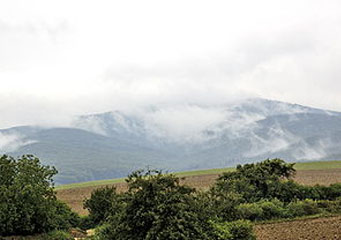
Above: Species Fractus Clouds
- Home
- Types of Clouds
- Accessory Clouds
- Altocumulus Castellanus Clouds
- Altocumulus Clouds
- Altostratus Clouds
- Anvil Clouds
- Anvil Dome Clouds
- Anvil Rollover Clouds
- Arcus Clouds
- Backsheared Anvil Clouds
- Cirrocumulus Clouds
- Cirrostratus Clouds
- Cirrus Clouds
- Clear Slot Clouds
- Cloud Tags Clouds
- Collar Clouds
- Condensation Funnel Clouds
- Congestus Clouds
- Cumulogenitus Clouds
- Cumulonimbogenitus Clouds
- Cumulonimbus Clouds
- Cumulus Clouds
- Debris Clouds
- Dry Slot Clouds
- Duplicatus Clouds
- Fallstreak Hole Clouds
- Funnel Clouds
- Hail Fog Clouds
- Hot Tower Clouds
- Incus Clouds
- Inflow Band Clouds
- Intortus Clouds
- Inverted Cumulus Clouds
- Knuckles Clouds
- Lacunosus Clouds
- Mammatus Clouds
- Nacreous Clouds
- Nimbostratus Clouds
- Noctilucent Clouds
- Opacus Clouds
- Pannus Clouds
- Perlucidus Clouds
- Pileus Clouds
- Praecipitatio Clouds
- Pyrocumulus Clouds
- Radiatus Clouds
- Roll Clouds
- Rope Clouds
- Scud Clouds
- Shelf Clouds
- Species Fractus Clouds
- Stratocumulus Clouds
- Stratus Clouds
- Striations Clouds
- Tail Clouds
- Towering Cumulus Clouds
- Translucidus Clouds
- Tuba Clouds
- Undulatus Clouds
- Velum Clouds
- Vertebratus Clouds
- Wall Clouds
Species Fractus Clouds
Aside from classifying clouds by types, most clouds are further sorted according to species based on their shape, size and the manner in which the cloud elements are arranged in the cloud layer. One of them is the species fractus clouds. The great thing about these clouds is that they rapidly develop and in the sky. Let us learn more about this cloud phenomenon on the succeeding paragraphs.
Species fractus clouds refer to small, shredded cloud fragments normally found beneath a parent cloud. They could either be in cumuliform species (cumulus-like shape) or stratiform species (showing extensive horizontal growth). Species fractus usually form in gusty winds or precipitation region of clouds and their ragged appearance is due to the strong winds at the cloud level. Although species fractus clouds have a frightening appearance, they are far from being dangerous.
At What Height is Species Fractus Clouds Found?
Species fractus clouds usually develop detached from the parent cloud at low altitudes between 2,000 and 3,000 feet above the Earth’s surface. They spread out across the sky randomly. Due to strong wind shear, species fractus change and dissipate abruptly. However, it may further grow into cumulus cloud if there is enough heat on the surface to initiate atmospheric convection. Whereas species fractus clouds do not produce precipitation, the accompanying parent cloud does.
Classification of Species Fractus Clouds
Species fractus clouds are further categorized as cumulus fractus and stratus fractus. Let us consider each of them closely.
- Cumulus Fractus
This cloud is often seen underneath a decaying cumulonimbus cloud and is recognizable by the small and shredded cloud fragments. Cumulus fractus also appear under nimbostratus rain clouds during a rainfall.
- Stratus Fractus
If the decaying cumulonimbus cloud forms a continuous layer, it is classified as stratus fractus. It is characterized as a ragged and gray low-lying cloud layer that strongly indicates bad weather. Stratus fractus also appears under nimbostratus clouds.
How do Species Fractus Clouds Form?
Species fractus clouds may form in two ways, namely, low level condensation and dissipation from a larger thunderstorm cloud. In low level condensation, the warm air rises to the atmosphere and condenses at lower altitude. Due to the intense wind shear happening underneath the parent cloud, these clouds take on a shredded appearance and are completely separated from the parent cloud. On the other hand, species fractus forms when a cumulonimbus cloud dissipates. It occurs when heavy precipitation begins to fall and the base of the cumulonimbus cloud becomes ragged and not well defined.
What do Species Fractus Clouds Look Like?
Species fractus cloud exhibits a shredded appearance with unclear cloud base. It has irregular patterns that closely resemble torn-out pieces of cotton candy. The shredded exterior is due to strong wind movements underneath the cloud base.
How common are Species Fractus Clouds?
Species fractus is common all over the world as it forms during fair and inclement weather systems.
Intense wind shear near the Earth’s surface gives rise to the shredded appearance of species fractus clouds and it is also responsible for the swift changes and hurried disappearance of the cloud.
